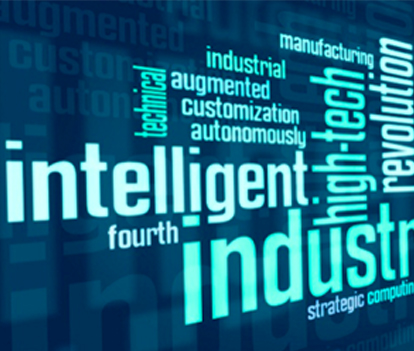
The first blog on Industry 4.0 focused on the arrival of the newest industrial revolution, its brief history and its birthplace-Germany. The blog also talked about the technological advancements leading to Industry 4.0 and the aspect of digitization. Let us now move ahead with a look at the emerging market trends and further explore the digitization aspect.
Courtesy: Deloitte
Global Trends-What do they tell us?
PwC’s 2016 Global Industry 4.0 Survey puts the pace being gathered by Industry 4.0 into perspective, and also the pace with which it is being adopted by industries worldwide. When 2,000 senior executives from industrial products companies in 26 countries across Europe, the Americas, Asia Pacific, Middle East and Africa were asked about the importance of data in decision making w.r.t. Industry 4.0, this was their reply:
A closer look at these figures showcases that the importance shown to data as being the influencer is low at present(only 50% of the firms across industries), but this will jump leaps and bounds in the next five years. Not surprisingly, Electronics industry leads the way, being the closest touch point and the easiest interface to gather data from. But, things will develop rapidly and other industries will likely keep pace.
Industry 4.0 promises new business models that will disrupt existing ecosystems. With IoT at the fore, new technologies integrating all of its platforms coupled with deep data processing and analysis is a realistic future prospect. With most platforms consolidating and use cases being defined by the end customers themselves, there will a lot of collaboration between various IoT players to provide low-priced solutions, leading to a shift in focus from Big Data and Machine Learning to Integration and Security.
The benefits will be widespread and felt globally
Ignore the ‘first movers’ advantage at your peril. Digitization, and the consequent adoption of Industry 4.0 standards, will not only bring in cost reductions but also incremental revenue gains. The payoff is overwhelming, and according to the PwC study mentioned above, these ‘early adopters’ are likely to see revenue gains of more than 30% and cost reduction and more than 30% cost reduction at the same time.
Firms across industries expect is significant cost reduction, primarily because of greater efficiency in light of the technological integration. The replacement of the legacy systems with a single central enterprise-wide system will naturally help bring the costs down.
This transformation will also result in revenue enhancement. Use of predictive analytics and real-time data will help in better personalization of products and offers. The below infograph (again, courtesy PwC) highlights the gains anticipated by industrial product companies across the globe. (No surprises as to which region and country currently heads the pack)
Digitization at the core of Industry 4.0
Industry 4.0 focuses on the end-to-end digitization of all physical assets and to form an ecosystems of value chain partners. As already talked about, this will not only bring in cost reduction but also help increase revenues enormously. When PwC asked respondents about their current level of digitization and integration, as well as the future scope of the same, the following was the result.
As can be seen, there is high optimism among the industry leaders that digitization and technology integration can be doubled in the next five years.
An overhaul of the current operations at a company, to include digitization across all processes and transferring data seamlessly between them will not only bring down the lead time but also lower the cost for bringing new products to market. A prime example is the current technology laden inventory management systems, which connect retailers, distribution centers, transporters, stockers, manufacturers, and suppliers. As these products become more perceptive to track activities around them, the vast data generated can be used to optimize the performance of the products and make it more customer centric. A vehicle, being repaired by a software upgrade rather than by a mechanic sounds cool right?
All this enables a closer interaction with the customer. With the entire value chain interconnected and more coordinated, it enables mass customization where every output from the assembly line is a product specifically catering to the requirement of a single customer. If you’ve customized your laptop, wherein you select a model first and then add features it suit your fancy, the end product is similar to what is being talked about here (not the process mind you). Couple all of this with predictive analytics to remodel the operational activities and target the right customer at the right time, firms can enter markets previously unimaginable and untapped.
Industry 4.0 also helps companies focus their efforts on the things that actually matter to the customer. The deeper we try to understand that, the more granular is the offering and the better experience it generates. That is the ultimate goal, right?
The next and final blog in the Industry 4.0 series will focus on the advantages gained by the early adopters, the effect of Industry 4.0 on globalization and its potential challenges and opportunities.
Aditya Kapoor
Aditya is a marketing strategist and leads the digital marketing division at SunTec Business Solutions.
No Comments yet!